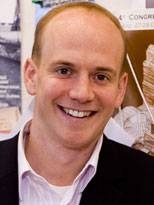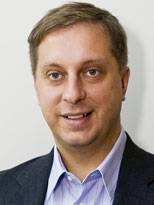Two MIT faculty members -- a physicist and a structural engineer who studies architectural history -- have won 2008 MacArthur Fellowships, commonly known as "genius" grants.
Marin Soljacic '96, assistant professor of physics, and John Ochsendorf, associate professor of architecture, will each receive $500,000 in "no strings attached" support over five years from the John D. and Catherine T. MacArthur Foundation.
The foundation today named 25 new fellows who were selected for "their creativity, originality and potential to make important contributions in the future."
Ochsendorf, 34, said he has been "walking on air" since getting the news last week. "It was like a lightening bolt out of the sky," he said. "I kept saying, 'It's not possible, it's just not possible.'"
Ochsendorf, who has been at MIT since 2002, studies building technology, evaluating the soundness of historical structures with an eye toward identifying ancient technologies for use in modern buildings.
His early studies investigated the construction of hand-woven, fiber-suspension bridges that spanned deep ravines in the Inca Empire. More recently, he has turned his attention to the causes of vault and buttress failures in French and Spanish Romanesque churches.
He and a group of students recently designed England's Pines Calyx dome, an energy-efficient structure built from local resources using a tile vaulting system patented in the 19th century by Spanish architect Rafael Guastavino.
"In the 21st century, as we're faced with climate change and diminishing natural resources, our buildings may look more like buildings from the past," Ochsendorf said.
Ochsendorf said that of the five universities where he has studied and taught, MIT is the only one where his current work would be possible. "I never found a university where I could do such interdisciplinary work so easily," he said. "At MIT it's not the exception but the norm."
'Completely overwhelming'
Soljacic, who has been an assistant professor at MIT since 2005, was also shocked upon receiving word of his award. When MacArthur Foundation Fellows Program Director David Socolow called with the news, he first asked Soljacic if he was alone.
Soljacic said yes, he was in the car on the way to pick up his son from school.
"He said, 'Do you think you could pull over? I don't want anything to happen to you,'" Soljacic said. "It's just completely overwhelming because it's so unexpected. It's a great and unexpected honor."
Soljacic, 34, is a theoretical physicist whose work on electromagnetic waves is important for understanding fundamental principles of optical physics and for development of devices such as switches for optical computers and wireless power transmitters.
Recently, he and his colleagues demonstrated both theoretically and experimentally that strongly coupled magnetic resonances can wirelessly transfer power over a few meters -- an advance that could be used to wirelessly recharge laptop computers, cell phones and other devices.
Soljacic said the MacArthur funding will allow him to work on innovative research that might not be funded by traditional sources.
"When you have something that you believe is a really good idea, but it's pretty risky, some people might think it's too far out and it's much harder to get funding," he said.
Soljacic was a Pappalardo Fellow in MIT's Department of Physics from 2000 to 2003 and a principal research scientist in the Research Laboratory of Electronics at MIT from 2003 to 2005.
Two MIT alumni were also named MacArthur Fellows: Andrea Ghez '87 and Adam Riess '92.
Ghez, a professor of astronomy at UCLA, works on improving the spatial resolution and precision of instruments used to peer at regions of the central galaxy. Her work allows for very precise analysis of stars and black holes.
Riess, a professor of physics and astronomy at Johns Hopkins University, was a leading contributor to the finding that the universe is not only expanding, but its rate of expansion is accelerating. He is now designing experiments and devices to detect and measure dark matter.
A version of this article appeared in MIT Tech Talk on September 24, 2008 (download PDF).







